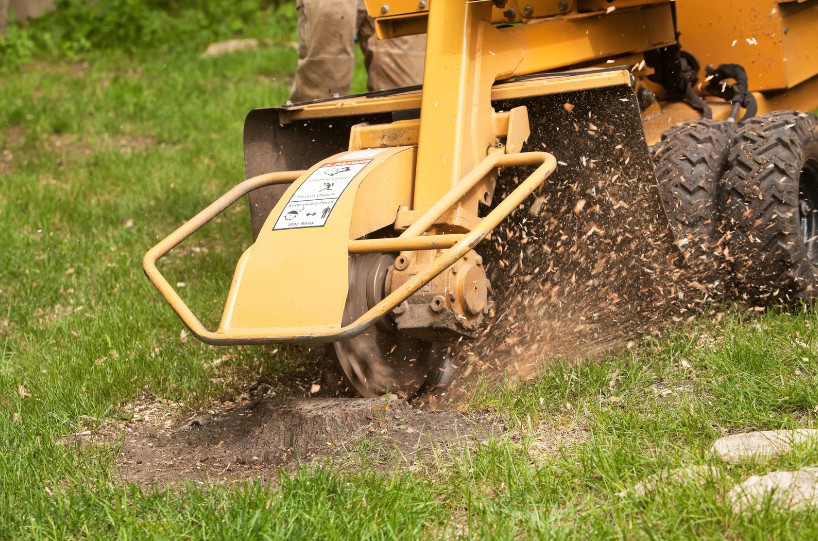Tree removal cost concerns many property owners across Louisiana, especially in areas like Mandeville, Slidell, and Covington where mature trees face constant threats from storms and disease. Understanding what influences pricing helps homeowners make informed decisions about their property’s safety and budget planning.
What Affects Your Tree Removal Cost?
Several factors determine how much you’ll pay for professional tree removal services. Tree size represents the most significant pricing factor, with larger specimens requiring specialized equipment and more time to remove safely. A small tree under 30 feet might cost $200-$500, while massive oaks common in Lacombe and Madisonville can reach $2,000-$5,000 or more.
Location plays another major role in tree removal cost calculations. Trees near power lines, buildings, or other structures require careful planning and additional safety measures. Property owners in densely populated areas like Hammond and Ponchatoula often pay premium rates because technicians must work around obstacles and use specialized techniques to prevent damage.
Tree condition significantly impacts removal expenses. Healthy trees with strong wood structure are typically easier and safer to remove than diseased or damaged specimens. Dead trees, while appearing simpler to handle, can actually increase costs because their unpredictable nature requires extra caution during the removal process.
Size Categories and Associated Costs
Small trees measuring 15-30 feet tall generally fall into the most affordable category for removal services. These trees, common in newer developments throughout Folsom and Abita Springs, typically cost between $200-$800 to remove professionally. The relatively straightforward process involves minimal equipment and can often be completed in a few hours.
Medium-sized trees ranging from 30-60 feet present moderate complexity and corresponding costs. Property owners can expect to pay $500-$1,500 for these removals, depending on location and accessibility. These trees require bucket trucks or climbing equipment, making the process more involved than smaller specimens.
Large trees exceeding 60 feet represent the highest cost category, often requiring $1,500-$5,000 or more for safe removal. The magnificent live oaks and pine trees throughout Pearl River and Bogalusa frequently fall into this category. These removals demand specialized equipment, multiple crew members, and sometimes several days to complete safely.
Emergency vs. Planned Tree Removal Cost
Emergency situations dramatically affect tree removal cost structures. When storms damage trees in Slidell or Kentwood, property owners often face premium pricing for urgent removal services. Emergency calls typically cost 50-100% more than scheduled removals because crews must respond immediately, often working in dangerous conditions or outside normal business hours.
Planned removals offer significant cost advantages. Property owners who schedule tree removal services during off-peak seasons or when crews have availability often receive better pricing. Planning ahead also allows time for proper permits and insurance claim processing when applicable.
Seasonal timing influences pricing as well. Spring and summer months see higher demand for tree services, potentially increasing costs. Fall and winter removals in areas like Franklinton might offer cost savings, though weather conditions can complicate the process.
Insurance Coverage and Tree Removal Cost
Homeowners insurance coverage for tree removal varies significantly based on circumstances and policy details. Most policies cover removal costs when trees fall due to covered perils like wind, hail, or lightning damage. However, coverage typically excludes preventive removal of healthy trees that might pose future risks.
Insurance companies usually cover tree removal costs up to specific limits, often $500-$1,000 per tree with annual maximums. Some policies provide higher coverage amounts, particularly for premium plans. Property owners should review their specific policy language to understand exact coverage terms and limitations.
When insurance does cover removal, most policies require the tree to have caused actual damage to covered structures or block essential access routes. Simply removing a tree because it might fall rarely qualifies for coverage, regardless of the potential risk it poses to property.
Equipment and Labor Factors in Tree Removal Cost
Professional tree removal requires specialized equipment that significantly impacts pricing. Bucket trucks, cranes, chippers, and safety gear represent substantial investments for tree service companies. These equipment costs get factored into removal pricing, particularly for complex jobs requiring multiple pieces of machinery.
Skilled labor represents another major cost component. Certified arborists and experienced tree climbers command higher wages due to their specialized training and expertise. Property owners in Mandeville and surrounding areas benefit from this expertise through safer, more efficient removals that minimize property damage risks.
Crew size requirements vary based on tree size and complexity. Small removals might require only 2-3 workers, while large tree removals could need 5-6 crew members for safe completion. Additional crew members increase labor costs but often reduce overall project duration.
Permit Requirements and Associated Costs
Many Louisiana communities require permits for tree removal, adding to overall project costs. Cities like Covington and Madisonville have specific ordinances governing tree removal, particularly for larger specimens or trees in protected areas. Permit fees typically range from $25-$200, depending on local regulations.
Some areas require replacement plantings when removing certain tree species or sizes. These requirements can add hundreds of dollars to overall project costs but help maintain community canopy coverage. Property owners should research local regulations before scheduling removal services.
Professional tree service companies often handle permit applications as part of their service, though this convenience may include additional fees. Self-obtaining permits can save money but requires time and knowledge of local requirements.
Additional Services That Affect Tree Removal Cost
Stump grinding represents a common add-on service that increases overall tree removal cost. While not always necessary, removing stumps prevents regrowth and eliminates potential hazards. Stump grinding typically costs $75-$400 per stump, depending on size and accessibility.
Debris removal and cleanup services also impact final pricing. Some companies include basic cleanup in their removal quotes, while others charge separately for hauling away wood chips, logs, and branches. Property owners should clarify what cleanup services are included in quoted prices.
Wood processing services can sometimes offset removal costs. Large trees with valuable timber might generate revenue that reduces overall expenses. However, this option depends on wood quality, species, and current market conditions for lumber products.
Geographic Factors in Louisiana Tree Removal Cost
Soil conditions throughout Louisiana affect tree removal complexity and costs. The clay soils common in areas like Hammond and Ponchatoula can make stump removal more challenging, potentially increasing expenses. Sandy soils in coastal areas might allow easier root system extraction.
Access limitations in established neighborhoods impact pricing significantly. Narrow streets, mature landscaping, and close property lines in historic areas of Slidell and Mandeville can complicate equipment access, requiring smaller machinery or hand-carrying equipment longer distances.
Local competition among tree service providers influences regional pricing. Areas with multiple qualified companies typically see more competitive pricing, while remote locations with fewer service options might experience higher costs due to limited competition.
Choosing Professional Tree Services vs. DIY Removal
Professional tree removal offers significant safety advantages over DIY attempts, though costs are higher initially. Certified arborists possess the training, equipment, and insurance coverage necessary for safe tree removal. This expertise becomes particularly valuable for large trees or complex removal situations.
DIY tree removal might seem cost-effective but carries substantial risks. Property damage, personal injury, and equipment rental costs can quickly exceed professional service fees. Most homeowners insurance policies don’t cover damage caused by DIY tree removal attempts, leaving property owners liable for any accidents.
Professional services also provide proper disposal of tree debris, which can be costly and time-consuming for homeowners to handle independently. Many municipalities restrict how tree waste can be disposed of, making professional services more convenient and compliant with local regulations.
Getting Accurate Tree Removal Cost Estimates
Obtaining multiple quotes helps property owners understand fair market pricing for their specific situation. Reputable companies provide detailed estimates that break down costs for removal, cleanup, and any additional services. These detailed quotes help compare offerings and identify potential hidden fees.
On-site evaluations produce more accurate pricing than phone estimates. Tree service professionals need to assess factors like size, location, obstacles, and access requirements to provide realistic cost projections. Remote estimates often underestimate complexity, leading to unexpected price increases during the work.
Seasonal timing affects quote accuracy as well. Estimates obtained during peak season might reflect higher demand pricing, while off-season quotes could offer better value. Property owners with flexible timing can often secure better rates by scheduling work during slower periods.
Storm Damage and Emergency Tree Removal Cost
Louisiana’s storm season brings unique challenges that affect tree removal cost considerations. Hurricane and tornado damage often creates urgent situations requiring immediate professional intervention. Emergency response typically costs significantly more than routine removal due to increased risks and time pressures.
Storm-damaged trees present complex removal challenges that standard pricing doesn’t always capture. Partially fallen trees, those leaning against structures, or specimens with compromised root systems require specialized techniques and additional safety measures. These complications can double or triple normal removal costs.
Post-storm demand surges often strain local tree service capacity, leading to temporary price increases. Property owners might wait longer for service or pay premium rates during peak demand periods. Planning ahead with established relationships can help secure priority service when emergencies arise.
Working with insurance adjusters becomes necessary for storm-related removals. Professional tree services familiar with insurance processes can help document damage properly and provide necessary paperwork for claim processing. This expertise often proves valuable in securing maximum coverage benefits.
Long-term Cost Considerations for Tree Management
Regular tree health inspections can identify problems before they require expensive emergency removals. Early detection of disease, pest issues, or structural problems allows for less costly interventions that might preserve the tree or enable planned removal during favorable conditions.
Preventive tree trimming services help maintain tree health and reduce future removal needs. Regular pruning eliminates weak branches, improves structure, and can extend tree lifespan significantly. These investments often cost less than emergency removal after storm damage occurs.
Storm preparation and risk mitigation services help property owners identify and address potential hazards before they become emergencies. Professional assessments can recommend selective removal of high-risk trees or pruning to reduce wind resistance during storms.
Property values benefit from professional tree management programs that maintain healthy canopy coverage while eliminating hazardous specimens. Well-maintained trees add significant value to properties throughout Louisiana, often offsetting management costs through increased property values.
Working with ArborWorks for Your Tree Removal Needs
ArborWorks provides professional tree removal services throughout the greater New Orleans area, including Abita Springs, Covington, Folsom, Lacombe, Madisonville, Mandeville, Pearl River, Slidell, Hammond, Ponchatoula, Kentwood, Bogalusa, and Franklinton. Our certified arborists understand local conditions and regulations, ensuring compliant and safe tree removal services.
Our team uses modern equipment and proven techniques to minimize property damage while completing removals efficiently. We provide detailed estimates that clearly outline all costs, helping property owners make informed decisions about their tree management needs.
Insurance claim assistance represents another valuable service we provide. Our experience working with insurance companies helps ensure proper documentation and maximum coverage benefits for storm-damaged tree removals.
Ready to address your tree removal needs? Contact ArborWorks at (985) 951-0128 or visit our contact page to schedule a consultation. Our professional team will assess your situation and provide accurate cost estimates for safe, efficient tree removal services.
Frequently Asked Questions About Tree Removal Cost
1. How much does it cost to remove a large oak tree in Louisiana? Large oak tree removal typically costs $2,000-$5,000 or more, depending on size, location, and complexity. Trees near structures or power lines often cost more due to additional safety requirements and specialized equipment needs.
2. Does homeowners insurance cover tree removal costs? Insurance typically covers tree removal when storms or other covered perils cause the tree to fall and damage covered structures. Preventive removal of healthy trees rarely qualifies for coverage, regardless of potential risks.
3. What time of year offers the best pricing for tree removal? Fall and winter months often provide better pricing due to lower demand for tree services. However, weather conditions might affect scheduling, so planning ahead helps secure optimal timing and pricing.
4. How do I get an accurate estimate for tree removal? Request on-site evaluations from multiple certified arborists. Detailed inspections of tree size, location, obstacles, and access requirements produce more accurate estimates than phone quotes based on general descriptions.
5. What factors increase tree removal costs the most? Tree size, proximity to structures, emergency timing, and access limitations represent the primary factors that increase removal costs. Complex situations requiring specialized equipment or techniques also significantly impact pricing.
6. Should I remove a tree myself to save money? DIY tree removal carries substantial safety risks and potential liability for property damage. Professional services provide insurance coverage, proper equipment, and expertise that often justify the additional cost over DIY attempts.
7. How much extra does emergency tree removal cost? Emergency tree removal typically costs 50-100% more than scheduled removals due to immediate response requirements, dangerous working conditions, and after-hours labor rates that emergency situations often demand.
8. Do I need permits to remove trees on my property? Many Louisiana communities require permits for tree removal, particularly for larger specimens or protected species. Permit requirements and fees vary by location, so check local regulations before scheduling removal services.
9. What’s included in a typical tree removal quote? Standard quotes typically include cutting and removing the tree, basic cleanup of debris, and hauling away major wood pieces. Stump grinding, detailed cleanup, and permit fees often cost extra unless specifically included.
10. How can I reduce my tree removal costs? Planning ahead, scheduling during off-peak seasons, obtaining multiple quotes, and bundling multiple trees for removal can help reduce costs. Regular maintenance and early problem detection also prevent more expensive emergency removals.
According to the USDA Forest Service, proper tree management and timely removal of hazardous trees significantly reduces property damage risks and long-term costs for homeowners.



